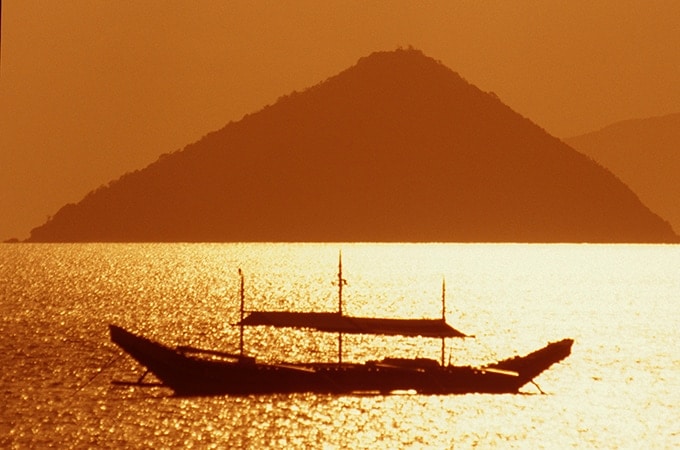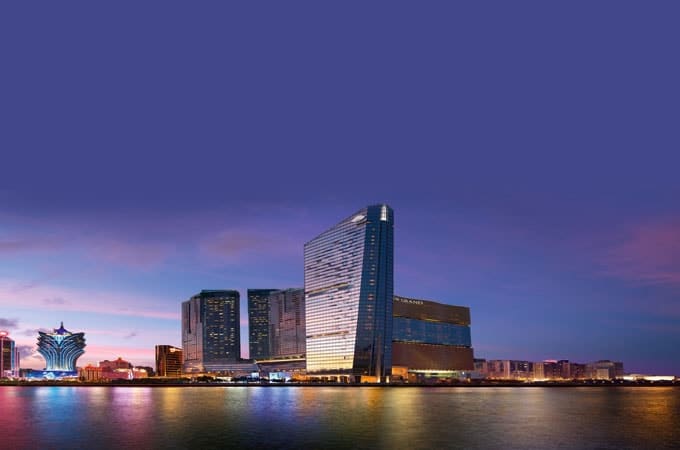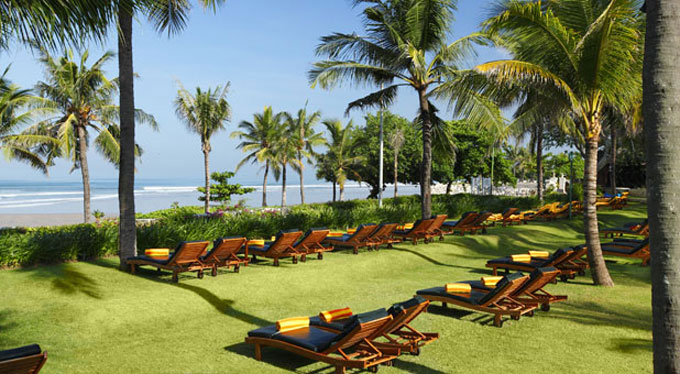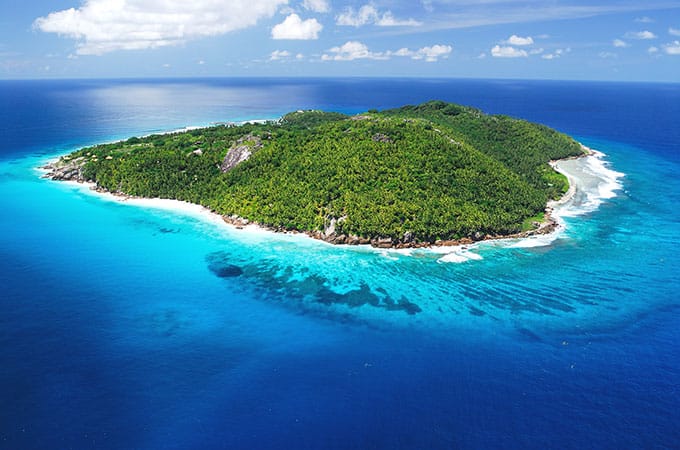Located in the province of Palawan in the Philippines, El Nido is a breathtaking destination that boasts some of the world’s most stunning natural wonders. With over 7,600 islands to explore, visitors can expect to discover hidden lagoons, limestone formations, sandbanks, and pristine beaches with crystal-clear waters. Check out our travel guide to learn more about this incredible destination.
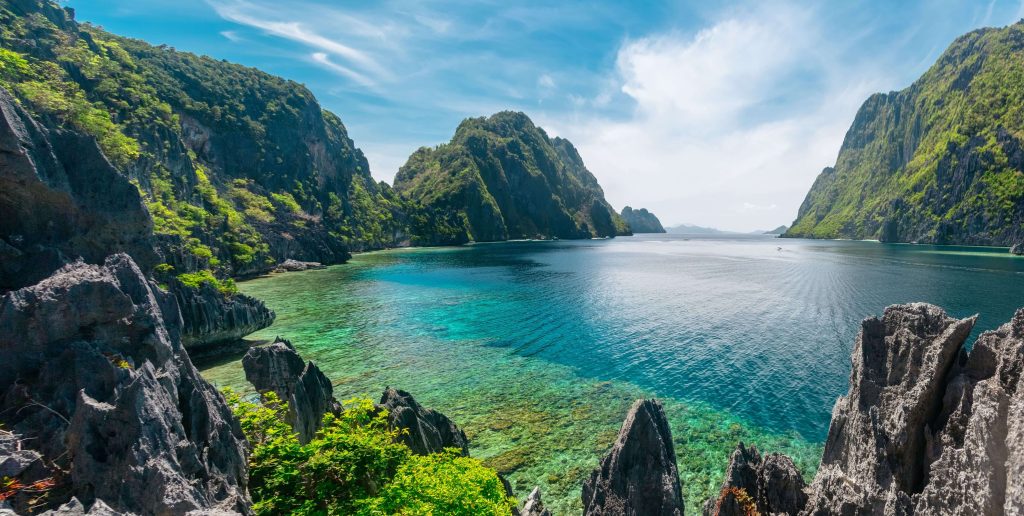
Even by night the gods of El Nido seem incapable of taming their palette. Beneath a full moon the lagoon shallows still glow like pale jade. Come morning, you head out to explore this world of upstart isles that rise from the sea in mad limestone spires with wild jungle top-knots.
El Nido Marine Reserve in the heart of the Northern Palawan archipelago is one of the Pacific’s best-kept secrets. Hidden among its 45 islands are several low-key resorts, including Lagen Island and the more luxurious Miniloc Island, palm-shaded escape chutes from a relentlessly chattering outside world.
The Spanish term El Nido, “the nest”, refers to the edible nests of swiflets that are found high on the 250-million year old cliffs. The local men who climb rickety, notched bamboo poles to gather these valuable nests — the main ingredient for gourmet birdsnest soup dish — are adventurers by economic necessity, even if looting the nests is ecologically-harmful.
For a visiting couple, your outdoor thrills in El Nido don’t require any such dare-devil stunts. The islands attract a mixture of visitors — Filipinos, Westerners and East Asians — many of whom are divers and honeymooners.
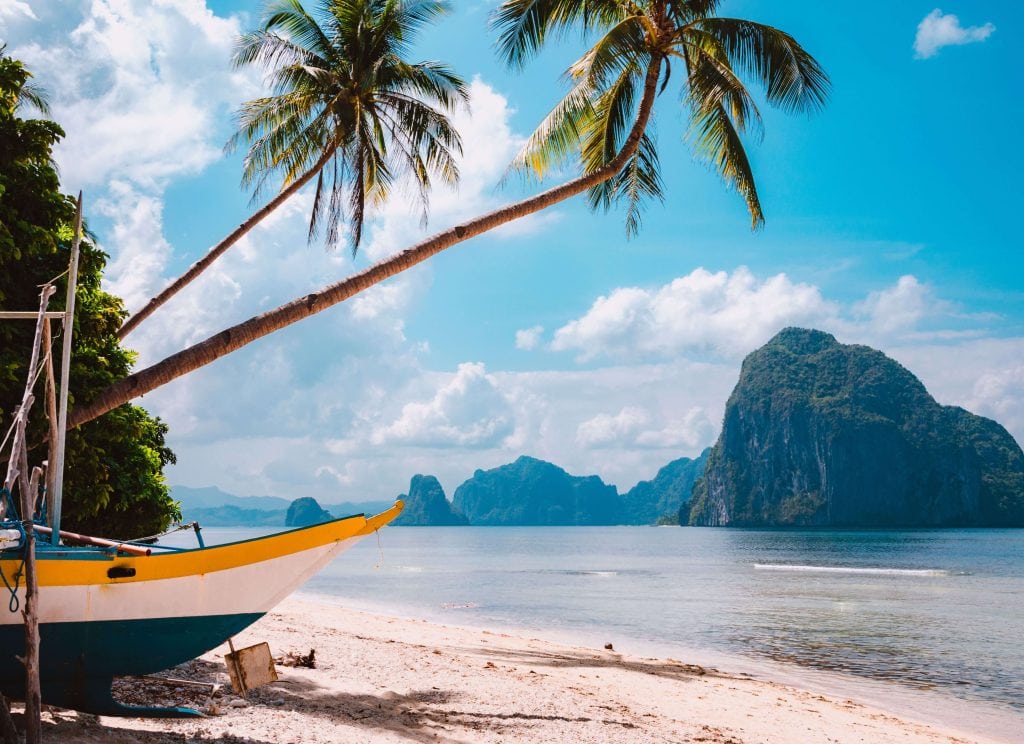
Whether you snorkel, dive, kayak or just want a lazy look-see, any adventure starts with a journey by motorised “pumpboat” or banca, as the Filipinos call their swift, double-outrigger craft. Weaving among a wreath of uninhabited islands that jut from turquoise waters, you come to half-moon sandbars (that often disappear with high tide), ancient burial caves and coral piers that, undercut by a million tides, seem to balance like ballerinas on the sea’s stage.
At places where even the banca cannot go, you slip overboard into a double kayak to then paddle under coral archways. You find yourselves within a secret lagoon that can be entered only at low tide, a silent grotto of pandanus- topped cliffs and surprising visions — a black heron swooping above the water, a stingray scudding rhythmically across the bottom.
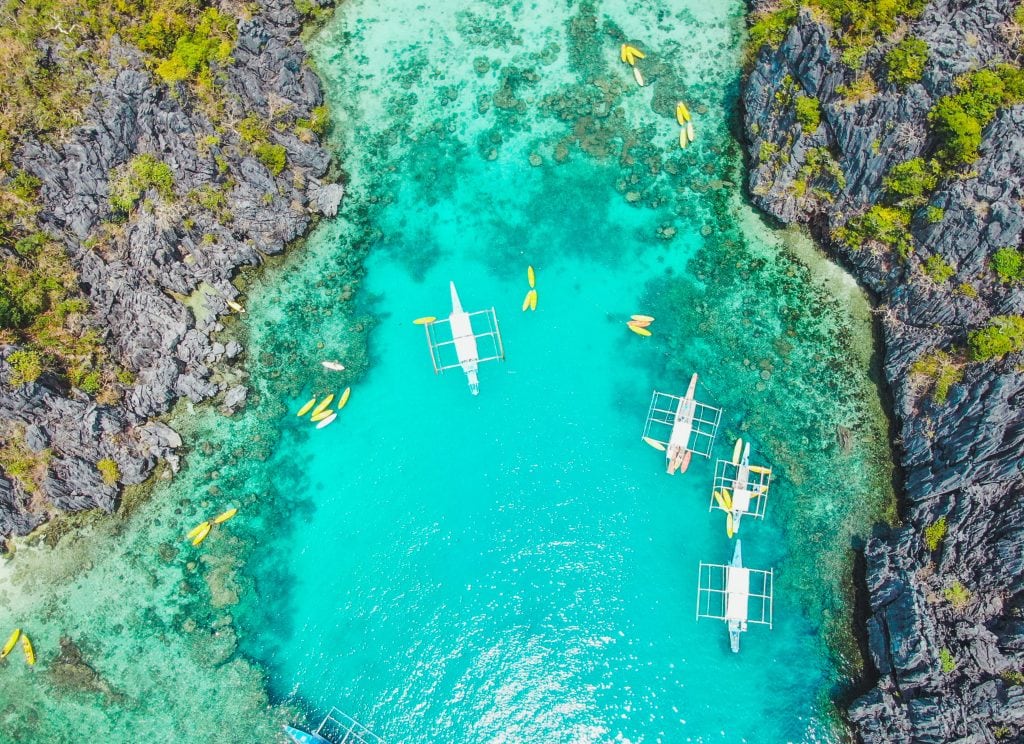
You can snorkel in these tranquil waters, over fish-thronged reefs or in sandy coves. Better still is the scuba diving — both resorts have full dive centres. Once below the surface you appreciate how well El Nido’s Marine Reserve status has protected its reefs as well as the islands’ shores and forests from the predations of “civilisation.” There are some 30 dive sites, most with 20-metre visibility, with around 100 species of hard and soft corals; plus 200 species of fish, including barracuda, parrot fish, grouper, damsel fish and fusiliers in prolific numbers. Even in your resort’s lagoon you can drop bread into the water and watch literally thousands of jackfish come swirling after it.
Related article: Snorkelling Sensations: Discover Extraordinary & Romantic Wonders
Initially opened to visitors as a diving destination in the mid-1980s, El Nido is a heartening example of how low-impact tourism can preserve rather than trash its own tropical nest. By using principally local staff and services, resorts like Miniloc and Lagen have brought a sustainable, alternative income to many Palawan villagers and preserved this pristine little Eden from dynamite fishing and logging.
El Nido is an 80-minute flight south from Manila, followed by a boat ride to your resort. It’s worth it. With sunsets to burn and moonrises to fill half a memory card, for couples this is a nest of dreams. Romance and adventure, the ocean and jungle, islands and time. Plus great seafood, quality suite accommodation and cheerful Filipino hospitality.
And each evening, after you’ve packed- in the kayaking or diving and are just sitting back together on your deck overlooking the lagoon, those shallows below you still glow as green as old jade.
El Nido, Palawan: What You Need to Know Before You Go
Best Time to Go to El Nido: If you’re planning a trip to El Nido, you need to consider the season. Since most activities in El Nido involve being outdoors and exploring the beaches and islands, it’s best to go during the dry months. The optimal time to visit is between January and April, when the weather is sunny and dry. However, it’s important to note that the summer season in the Philippines falls between March and April, so there may be more local travellers during this time. While the rainy season typically begins in May, enjoying sunny weather without tropical storms is still possible.
WiFi: Staying connected while exploring the stunning sights of El Nido can be a challenge. While some cafes and hotels do offer WiFi, it may not always be reliable. To ensure a steady connection, it’s recommended to purchase a local sim card for your trip. This will allow you to easily share your adventures on social media without any interruptions.
Getting there: Fly Philippine Airlines to Manila. From Manila there are daily flights to El Nido, followed by a boat ride to Lagen Island.
Accommodation: Miniloc Resort and Lagen Island Resort, part of El Nido Resorts are a good choice for couples.
Looking for romantic accommodation for a Philippines honeymoon or couples’ holiday? Check out our library of hand-picked hotels in The Philippines that are just perfect for two!
Related article: Experience the Romance of the Philippines – a complete travel guide for couples
